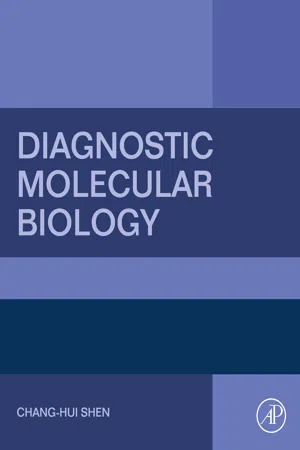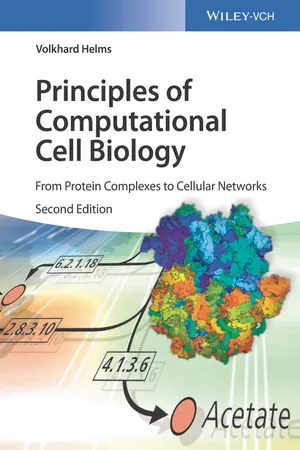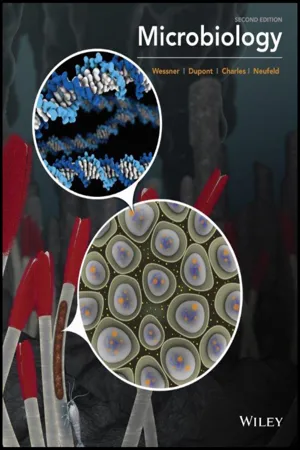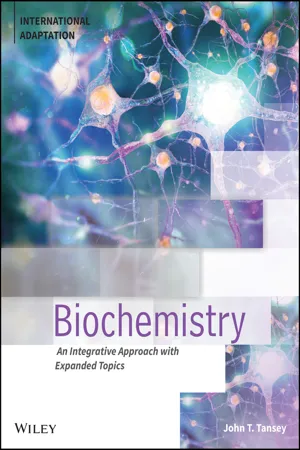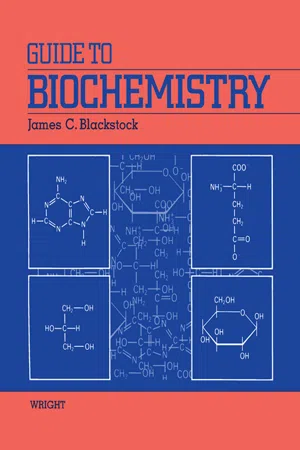Biological Sciences
Prokaryotic Gene Expression
Prokaryotic gene expression refers to the process by which genes in prokaryotic cells are transcribed and translated to produce proteins. This process involves the binding of RNA polymerase to the promoter region of the gene, followed by transcription and translation of the mRNA into a functional protein. Prokaryotic gene expression is tightly regulated to ensure that the correct proteins are produced at the right time.
Written by Perlego with AI-assistance
Related key terms
8 Key excerpts on "Prokaryotic Gene Expression"
- Tina M. Henkin, Joseph E. Peters(Authors)
- 2020(Publication Date)
- ASM Press(Publisher)
2 Bacterial Gene Expression: Transcription, Translation, Protein Folding, and Localization- Overview
- The Structure and Function of RNA
- Types of RNA
- RNA Precursors
- RNA Structure
- RNA Processing and Modification
- Transcription
- Structure of Bacterial RNA Polymerase
- Overview of Transcription
- Details of Transcription
- rRNAs and tRNAs
- RNA Degradation
- RNases
- The Structure and Function of Proteins
- Protein Structure
- Translation
- Structure of the Bacterial Ribosome
- Overview of Translation
- Details of Protein Synthesis
- The Genetic Code
- Polycistronic mRNA
- Protein Folding and Degradation
- Protein Chaperones
- Protein Degradation
- Protein Localization
- The Translocase System
- The Signal Sequence
- The Targeting Factors
- The Tat Secretion Pathway
- Disulfide Bonds
- Protein Secretion and Export
- Protein Secretion Systems in Bacteria with an Outer Membrane
- Protein Secretion in Bacteria That Lack an Outer Membrane
- Sortases
- Regulation of Gene Expression
- Transcriptional Regulation
- Posttranscriptional Regulation
- What You Need To Know
- Open Reading Frames
- Transcriptional and Translational Fusions
- BOX 2.1 Antibiotic Inhibitors of Transcription
- BOX 2.2 Molecular Phylogeny
- BOX 2.3 Antibiotic Inhibitors of Translation
- BOX 2.4 Mimicry in Translation
- BOX 2.5 Exceptions to the Code
Fluorescence of transformants expressing MBP-GFP hybrid proteins. MC4100 transformed with the following: 1, pMGP2; 2, pMGC2; 8, MM52 [secA(Ts)] transformed with pMGP2; 3, pMGC2; 7, CK2163 (secB) transformed with pMGP2; 4, pMGC2; 6, IQ85 [secY(Ts)] transformed with pMGP2; and 5, pMGC2. From Feilmeier et al. 2000 (see Suggested Reading).UNCOVERING THE MECHANISM OF PROTEIN SYNTHESIS , and therefore of gene expression, was one of the most significant accomplishments in the history of science. The process of gene expression is called the central dogma- eBook - ePub
- Chang-Hui Shen(Author)
- 2019(Publication Date)
- Academic Press(Publisher)
Chapter 3Gene Expression: Transcription of the Genetic Code
Abstract
The central dogma of molecular biology is that DNA makes RNA, and RNA makes proteins. This process is called gene expression, and the genetic information is used within a cell to produce the proteins needed for the cell to function. The process of making RNA from DNA is transcription, a process of RNA biosynthesis. It is the first step in gene expression, and it is a vital control point in the expression of genes and production of proteins. In this process, one of the strands of the double-stranded DNA molecule (a template strand) is transcribed into a complementary sequence of RNA. The RNA sequence differs from DNA in three respects: (1) the DNA base thymine (T) is replaced by the RNA base uracil (U); (2) the sugar ring of RNA has a hydroxyl group in the 2′-position, whereas the sugar ring of DNA has a hydrogen group in the 2′-position; and (3) DNA exists as double helix, whereas RNA is single stranded. In this chapter, we discuss the mechanism of transcription in both prokaryotes and eukaryotes. Different types of RNA are also discussed in this chapter. - eBook - ePub
Principles of Computational Cell Biology
From Protein Complexes to Cellular Networks
- Volkhard Helms(Author)
- 2018(Publication Date)
- Wiley-VCH(Publisher)
8 Gene Expression and Protein SynthesisAmong living organisms, the circular or linear genomes of bacteria contain c. 4000–4500 genes, those of fungi such as Saccharomyces cerevisiae and Saccharomyces pombe contain c. 5000–6000 genes, and those of higher eukaryotes c. 18 000 (mice) to 30 000 (Arabidopsis thaliana) genes. In this chapter, we will discuss the experimental methods for measuring gene expression and computational methods that detect differential expression and functional enrichment of genes.8.1 Regulation of Gene Transcription at Promoters
Transcription is the process through which a DNA segment is copied by the enzyme RNA polymerase II to produce a complementary piece of RNA sequence. Transcription is divided into three stages: initiation, elongation, and termination. Here, we will only be concerned with the initiation process and how this is controlled by additional proteins. As transcription exclusively proceeds in the 5′ → 3′ direction, the DNA template strand used must be oriented in the 3′ → 5′ direction. In prokaryotes, transcription begins with the binding of RNA polymerase to a promoter sequence in the DNA. An RNA core polymerase is a multi‐subunit complex composed of α2 ββ′ subunits that catalyze the elongation of RNA (see Figure 2.1). At the start of initiation, the bacterial core enzyme is associated with a sigma factor that aids in finding the appropriate −35 and −10 bp upstream of the promoter sequences (Figure 8.1 ).Figure 8.1 Typical promoter region of a prokaryotic gene. The TTGACA and TATAAT motifs at positions −35 and −10 nucleotides are not essential. The preference for the corresponding nucleotide at each position is between 50% and 80%.Initiation of transcription in eukaryotes is far more complex than in prokaryotes as eukaryotic polymerases do not directly recognize their core promoter sequences. Instead, additional proteins termed transcription factors regulate the binding of RNA polymerase to DNA. Many eukaryotic promoters, but by no means all, contain a sequence motif termed TATA box. The TATA box is typically positioned in direct proximity upstream of the transcriptional start site (often within 50 bases). The TATA box functions as a binding spot for TATA binding proteins, which help in recruiting the RNA polymerase transcriptional complex. Figure 8.2 sketches a short genomic eukaryotic region that contains three exemplary genes. The figure serves to illustrate the position of the upstream promoter segment relative to gene B and the so‐called untranslated regions - Ryan Rogers(Author)
- 2018(Publication Date)
- Momentum Press(Publisher)
inducible. These genes have to be regulated and are expressed on an as needed basis. Control of gene expression is vital to ensure gene products can be produced on an immediate basis. This gives cells the flexibility to process and respond to external signals in addition to directing the diversity and abilities of cells in a living organism. In the case of facultative genes, they are expressed in a tissue-specific, or a cell-stage-specific, manner. These genes contribute to cellular differentiation and specialization and can be activated or silenced in response to changes in the environment.Historically, the process of gene expression involves two major events: transcription and translation. Transcription is the process of converting information encoded by DNA into an intermediary molecule, messenger RNA (mRNA). mRNA is then translated from nucleic acid into amino acids at the ribosome to form proteins. Together these events are known as the Central Dogma (Figure 6.1 ).Figure 6.1. The Central Dogma. The Central Dogma is a theory, which aims to characterize the transfer of information from DNA to functional product. In this theory it is hypothesized that DNA is converted into mRNA during transcription, which is followed by conversion of the code into amino acids during translation. Amino acids will fold to form final functional protein based on the chemical properties of the amino acid sequence.6.2 GENE STRUCTURESince DNA is an antiparallel double helix, genes can exist in either strand of the DNA. Each gene has specific regulatory regions flanking the coding sequences to delineate the beginning and the end of a specific coding sequence. The strand recognized by gene expression machinery is known as the template strand, as it will provide the complimentary sequence necessary to produce a copy of the code found in the coding strand (Figure 6.2 ). The region of the chromosomes where a specific gene can be found is referred to as the gene locus.- eBook - ePub
- Dave Wessner, Christine Dupont, Trevor Charles, Josh Neufeld(Authors)
- 2016(Publication Date)
- Wiley(Publisher)
How can a cell avoid this waste of energy and resources? A more energy efficient way to control metabolic pathways might be to regulate the transcription and/or translation of genes. In other words, the cell could regulate the amount of a protein present by controlling gene expression, rather than by regulating the activity of the protein. As we will see throughout this chapter, control of gene expression plays a central role in governing responses to environmental changes.In this chapter, we will present a variety of well-researched examples of how microorganisms control gene expression. Some control mechanisms affect one gene at a time, while other control mechanisms affect groups of genes. At the end of the chapter, we will examine three relatively complex bacterial behaviors—quorum sensing, virulence, and chemotaxis—and uncover the roles of both gene expression and protein modification in these behaviors. As we progress through this chapter, we will consider the following questions:- How are gene expression and enzyme activity controlled? (11.1 )
- How do regulatory proteins control transcription? (11.2 )
- How does a single environmental stimulus control multiple operons? (11.3 )
- How can mRNA be controlled? (11.4 )
- How do bacteria communicate with their neighbors? (11.5 )
- How do environmental conditions affect gene expression? (11.6 )
- How can bacterial cells regulate their behavior? (11.7 )
11.1 Differential gene expressionHow are gene expression and enzyme activity controlled?In Chapter 7 , we learned how the processes of transcription and translation result in the production of gene products with specific functions. As we consider the activities of a cell, though, it should be obvious that not all gene products are required at all times. Cells may need some gene products all the time, such as the enzymes involved in glycolysis, transcription, and translation. After all, these gene products are needed for metabolism and the production of proteins—essential processes of a cell. Therefore, the genes encoding these products are always expressed, a state referred to as constitutive expression . A cell may need other gene products only under certain conditions. For instance, a cell requires enzymes to metabolize a particular substrate only when that substrate is available. Similarly, it needs to produce an essential molecule only when sufficient amounts of that molecule are not present in the environment. Expression of genes encoding these products, then, may be turned on or off as needed, a state referred to as inducible expression - eBook - ePub
Biochemistry
An Integrative Approach with Expanded Topics
- John T. Tansey(Author)
- 2022(Publication Date)
- Wiley(Publisher)
Chapter OutlineThis chapter examines the similarities in different DNA sequences that regulate genes and how DNA-binding motifs found in proteins interact with DNA in both specific and nonspecific ways. Next, it considers how prokaryotes control gene expression both globally and on a gene-by-gene basis, using sigma factors, operons, and riboswitches. Finally, it explores how eukaryotes organize and consolidate DNA into chromosomes and modify gene expression to adapt to their environment. We also discuss biochemical aspects of several human diseases that arise as a result of aberrations in gene expression and the ways they are currently treated or may be treated in the future.17.1 DNA–Protein Interactions17.2 Regulation of Gene Expression in Prokaryotes17.3 Regulation of Gene Expression in EukaryotesCommon ThemesEvolution’s outcomes are conserved. • Organisms face environmental or developmental challenges and must adapt and respond in order to prosper and pass on their genes.• Like protein and nucleic acid structures, the control mechanisms themselves are often conserved. All the common mechanisms of gene regulation (operons, ligand-responsive transcription factors, riboswitches, attenuators, antiterminators, and miRNAs) are found in multiple species and often throughout biology.Structure determines function. • Several different protein structural domains are involved in DNA–protein interactions and, consequently, in DNA-binding proteins used for gene regulation. These domains are structurally conserved.• Like proteins, nucleic acids (specifically RNAs) can form complex but organized tertiary structures.• - No longer available |Learn more
- Mary Wuerth(Author)
- 2023(Publication Date)
- Barrons Educational Services(Publisher)
INS mRNA and the insulin protein levels would be low.Passage contains an image
17
Regulation and Mutations
Learning Objectives In this chapter, you will learn:➜Regulation of Gene Expression in Prokaryotes➜Regulation of Gene Expression in Eukaryotes➜Gene Expression Helps Cells Specialize➜MutationsOverview
The phenotype of an organism is determined by the genes that are expressed and the levels at which those genes are expressed. Regulation of gene expression is important in determining an organism’s phenotype. Genes can be regulated by the interaction of regulatory proteins with regulatory sequences in the genome. Regulatory proteins are proteins that can turn on or turn off genes by binding to specific nucleotide sequences. The nucleotide sequences to which these regulatory proteins bind are called regulatory sequences. Mutations in the genome may also affect gene expression. This chapter will review how the expression of genes is regulated (in prokaryotes and in eukaryotes) and the different types of mutations that can affect an organism’s phenotype.Regulation of Gene Expression in Prokaryotes
Prokaryotes use operons to regulate gene expression. An operon is a cluster of genes with a common function under the control of a common promoter. Operons contain regulatory sequences, genes for regulatory proteins, and genes for structural proteins (which are responsible for the function of the operon). An example of an operon is shown in Figure 17.1 - eBook - ePub
- James C. Blackstock(Author)
- 2014(Publication Date)
- Butterworth-Heinemann(Publisher)
CHAPTER 17Gene expression
Publisher Summary
This chapter presents the concept of gene expression. The concept of the central dogma of molecular biology, formulated in the late 1950s by Francis Crick may be summarized as DNA (deoxyribonucleic acid) →RNA (ribonucleic acid) →protein. Transcription is the process in which RNA is synthesized by enzymes called DNA-directed RNA polymerases. These enzymes use ribonucleoside triphosphates as substrates and DNA as a template. Specific base sequences signal the termination of transcription. Transcription produces RNA molecules. Translation involves two compartments: the cytosol in which individual amino acids are enzymically attached to their specific tRNAs by amino-acid-tRNA ligases and the ribosomes in which the amino acids are correctly positioned according to the base sequence of a mRNA template and polymerized into polypeptide chains. As there are four major bases in mRNA, 43 different codons are possible. The 64 triplets constitute the genetic code. The genetic code applies to prokaryotes and eukaryotic nuclear and chloroplast mRNAs but not to mitochondrial mRNAs. Therefore, the genetic code is quasi-universal.17.1 The central dogma
The concept of the central dogma of molecular biology (Section 1.6 ), formulated in the late 1950s by Francis Crick may be summarized as DNA (deoxyribonucleic acid) → RNA (ribonucleic acid) → protein.In all living organisms, nuclear DNA serves as the reservoir of genetic information which is expressed in terms of the structure of proteins manufactured by the cell. The base sequence of the DNA determines the amino acid sequence of proteins which are responsible for all aspects of cellular function. Because of cellular organization, synthesis of protein from the DNA blueprint occurs in two stages: transcription, i.e. the synthesis of a messenger RNA molecule of a structure complementary to the structure of DNA so that the genetic information is transferred to mRNA, and upon delivery of the message to the cytosol, its translation into protein.
Index pages curate the most relevant extracts from our library of academic textbooks. They’ve been created using an in-house natural language model (NLM), each adding context and meaning to key research topics.

